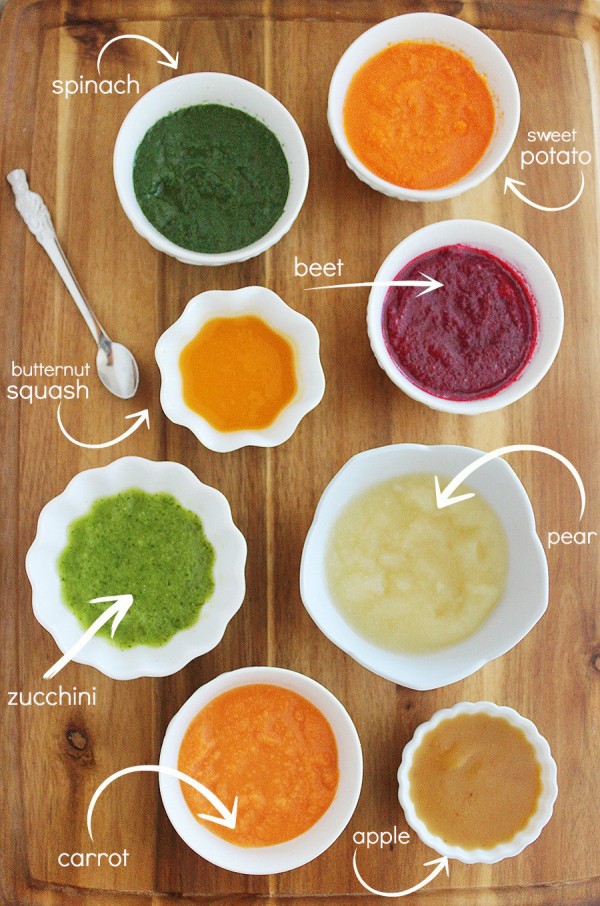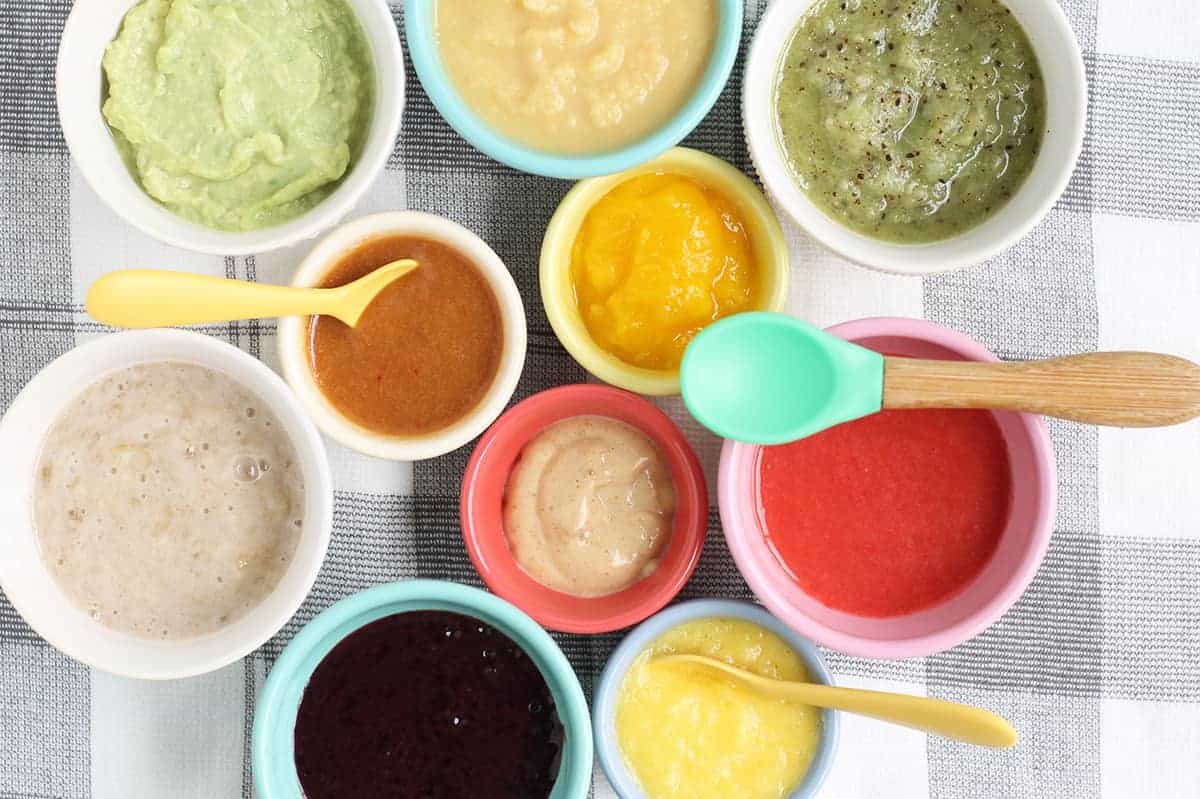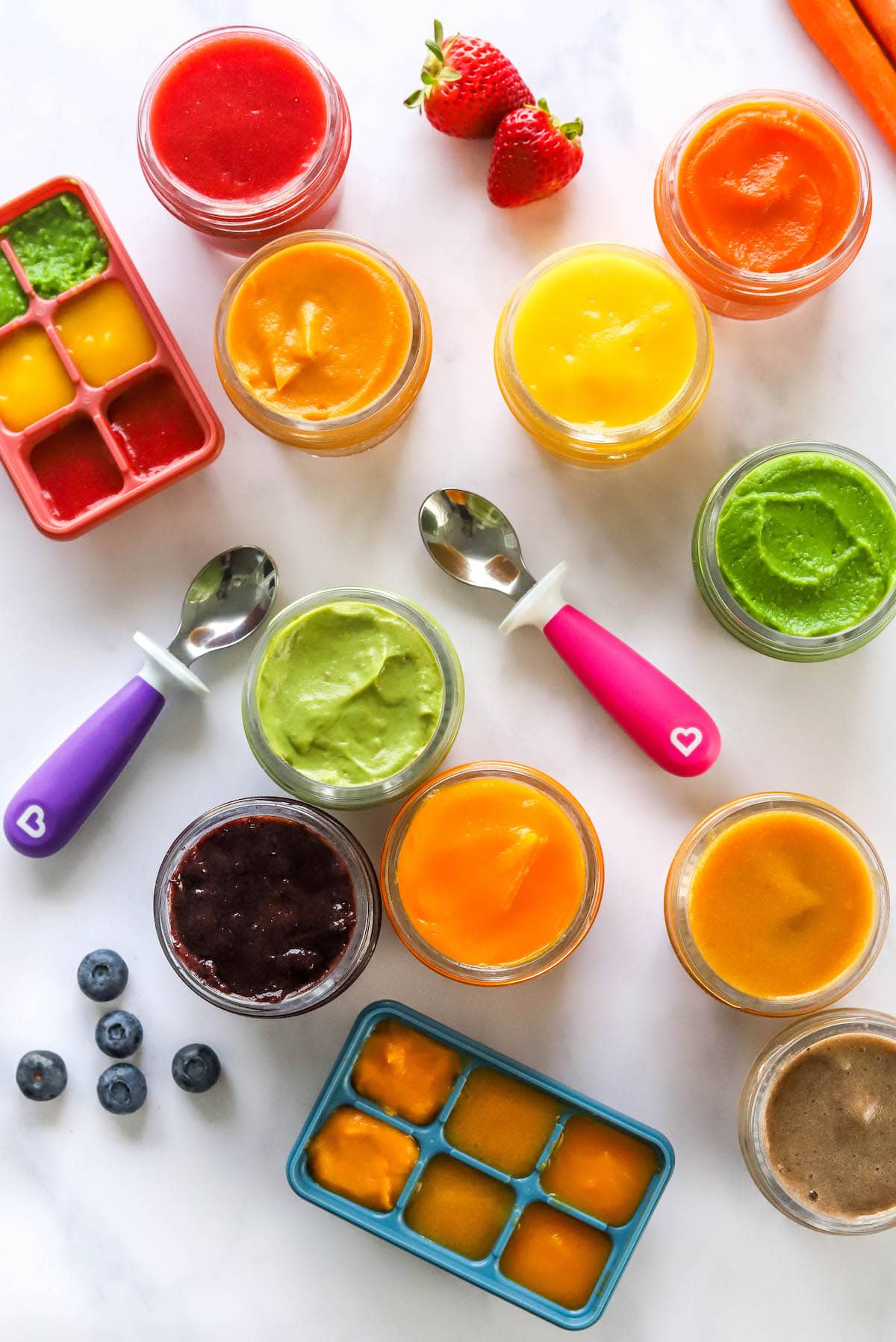Baby Food Purees: Essential Recipes for Healthy Growth
- Update Time : Tuesday, May 28, 2024

Baby food purees are nutritious, easy to digest, and perfect for introducing solids to infants. These smooth, mashed foods provide essential nutrients for a baby’s growth and development.
As parents, it’s important to choose high-quality ingredients and prepare fresh, homemade purees to ensure your baby gets the best start to their food journey. Whether you opt for fruits, vegetables, or a combination of both, baby food purees can be a tasty and healthy option for your little one.
Let’s explore the world of baby food purees and discover some creative recipes to delight your baby’s taste buds while nourishing their growing bodies.

Credit: www.thecomfortofcooking.com
Introduction To Baby Food Purees
Baby food purees are a popular choice for introducing solids to babies, being soft, easy to swallow, and nutrient-packed for growth. Homemade purees provide control over fresh, nutritious ingredients, catering to a baby’s dietary needs and can start at 4-6 months when signals readiness for food. Gradually introduce single-ingredient purees, progressing to varied flavors and textures.

Credit: www.yummytoddlerfood.com
Getting Started With Purees
When starting with baby food purees, it’s important to choose the right ingredients. Opt for fresh, organic fruits and vegetables to ensure your baby gets the best nutrition. Essential kitchen tools for making purees include a blender or food processor, a steamer, and ice cube trays for freezing portions. These tools make the process efficient and convenient. When introducing new flavors, start with single-ingredient purees to monitor any allergic reactions. Gradually, you can mix different ingredients to create exciting flavor combinations. Making your own baby food purees not only allows you to control the quality of ingredients but also helps your baby develop a taste for wholesome foods from an early age.
Simple Fruit Purees For Beginners
Introducing Simple Fruit Purees for Beginners – a perfect guide for making nutritious baby food purees. Learn how to create delicious and healthy fruit purees for your little one’s first food experiences. Discover easy recipes and helpful tips to ensure a smooth transition to solid foods.
| Fruit | Ingredients | Instructions |
|---|---|---|
| Banana Bliss | 1 ripe banana | Mash the banana with a fork until it reaches a smooth consistency. Serve immediately or refrigerate for up to 24 hours. |
| Apple Delight | 1 sweet apple | Peel and chop the apple into small pieces. Steam until soft, then blend until smooth. Serve immediately or refrigerate for up to 24 hours. |
| Pear Pleasure | 1 ripe pear | Peel and chop the pear into small pieces. Steam until soft, then blend until smooth. Serve immediately or refrigerate for up to 24 hours. |
These simple fruit purees are perfect for introducing your baby to solid foods. All you need is a few ripe fruits and a blender or food processor. The banana puree is a great first food because it is easy to digest and unlikely to cause an allergic reaction. The apple and pear purees are also gentle on your baby’s stomach and provide a variety of nutrients. Remember to always check with your pediatrician before introducing new foods to your baby’s diet.
Vegetable Purees Full Of Nutrients
These vegetable purees are packed with nutrients that are perfect for your baby’s growth and development. Made with fresh ingredients, these purees are easy to digest and provide essential vitamins and minerals. Give your baby the best start in life with these nutrient-rich baby food purees.
Protein-packed Purees For Development
Fuel your baby’s development with protein-packed purees, essential for growth and nourishment. These nutrient-dense baby food purees provide a wholesome and delicious way to introduce vital proteins into your little one’s diet, supporting their healthy development.
| Chicken Comfort | Lentil Love | Avocado Appeal |
| Introduce chicken for protein and iron needs. | Blend lentils for a fiber-rich and nutritious puree. | Create a creamy puree with avocado’s healthy fats. |
Combining Flavors: Advanced Recipes
| Combining Flavors: Advanced Recipes |
|---|
|
Looking to take your baby’s purees to the next level? Try these advanced recipes that combine delicious flavors for a unique taste experience:
With these advanced recipes, your baby will be introduced to new flavors and textures, helping to expand their palate and develop a love for healthy, homemade food. |
Ensuring Balanced Nutrition
When preparing baby food purees, it’s essential to ensure balanced nutrition. This means incorporating a variety of iron-rich foods to support healthy growth and development. Fruits and vegetables can provide essential vitamins and minerals, so it’s important to include a diverse range of options in your baby’s diet.
Storage And Safety Tips
When it comes to storing baby food purees, it’s important to follow some essential storage and safety tips. Freezing and thawing purees properly is crucial to maintain their quality. It’s advisable to use BPA-free ice cube trays or silicone baby food freezer trays for freezing individual portions. Once frozen, transfer the puree cubes to a labeled and dated airtight container or resealable bags for long-term storage.
Avoiding contamination is key to ensuring the safety of baby food purees. Always wash your hands thoroughly before handling baby food and use clean utensils and storage containers. Be sure to store the purees at the proper temperature and discard any leftovers that have been out for too long. By following these tips, you can ensure that your baby’s food is not only nutritious but also safe to consume.
Transitioning To Textured Foods
| Transitioning to Textured Foods |
|---|
|
Introducing textured foods to your baby is an important milestone in their development. But when is the right time to do it? Experts recommend waiting until your baby is around 8-9 months old and showing signs of being ready. These signs include sitting up unassisted, reaching for food, and showing interest in what you’re eating. When you start introducing textured foods, it’s important to do it gradually. Begin with soft, mashed foods and gradually move on to more textured foods like cooked vegetables and soft fruits. It’s also a good idea to mix in some breast milk or formula to make the transition smoother. Here are some tips for a smooth transition:
|

Credit: www.eatingbirdfood.com
Addressing Common Concerns
Addressing common concerns about baby food purees, this blog post provides helpful insights and practical tips for parents. Discover nutritious options, storage suggestions, and ways to introduce new flavors to your little one’s diet.
| Allergies and Sensitivities: Always check ingredients for potential allergens before introducing new foods. |
| Dealing with Picky Eaters: Try mixing purees with familiar foods to encourage acceptance. |
Frequently Asked Questions
What Are Good Pureed Foods For Babies?
Good pureed foods for babies include fruits like apples and pears, vegetables such as sweet potatoes and carrots, and proteins like chicken and tofu.
Can I Give My 4 Month Old Pureed Food?
It’s best to wait until 6 months to introduce pureed food to your 4-month-old. Stick to breast milk or formula for now.
What Are Stage 1 Foods For Babies?
Stage 1 foods for babies are single-ingredient purees like fruits and vegetables, suitable for beginners.
What Should I Start With Baby Purees?
Introduce single-ingredient purees like sweet potato or avocado to start with baby’s solid food journey.
Conclusion
Baby food purees are a convenient and nutritious option for introducing solids to infants. With their wide range of flavors and textures, they cater to the diverse needs of growing babies. By making your own purees at home, you can ensure the quality and freshness of the ingredients.
Additionally, incorporating a variety of fruits, vegetables, and grains into your baby’s diet can help establish healthy eating habits from an early age.


















Leave a Reply